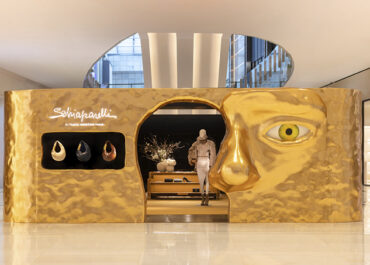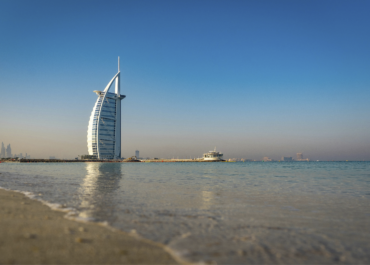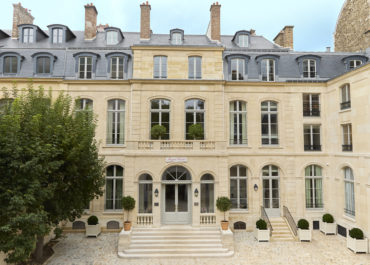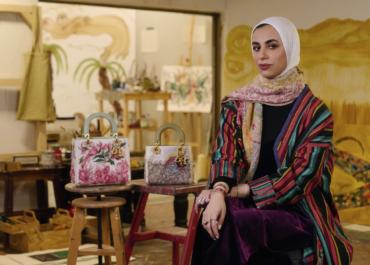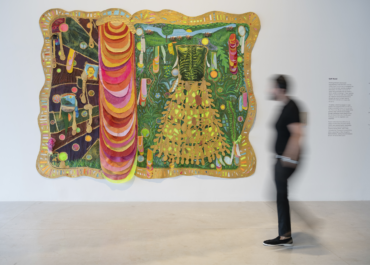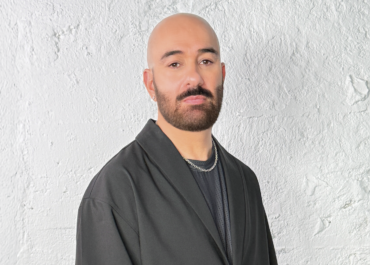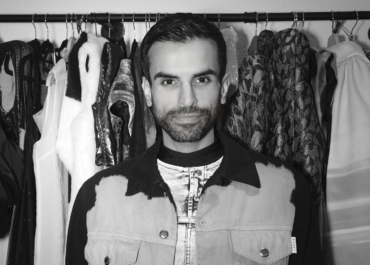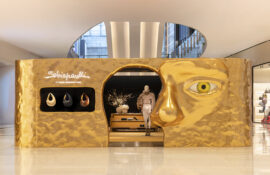Once a lesser-known emirate in the UAE, Ras Al Khaimah has rapidly ascended the global travel radar—thanks to its striking natural diversity, strategic development, and a bold vision for sustainable tourism growth.
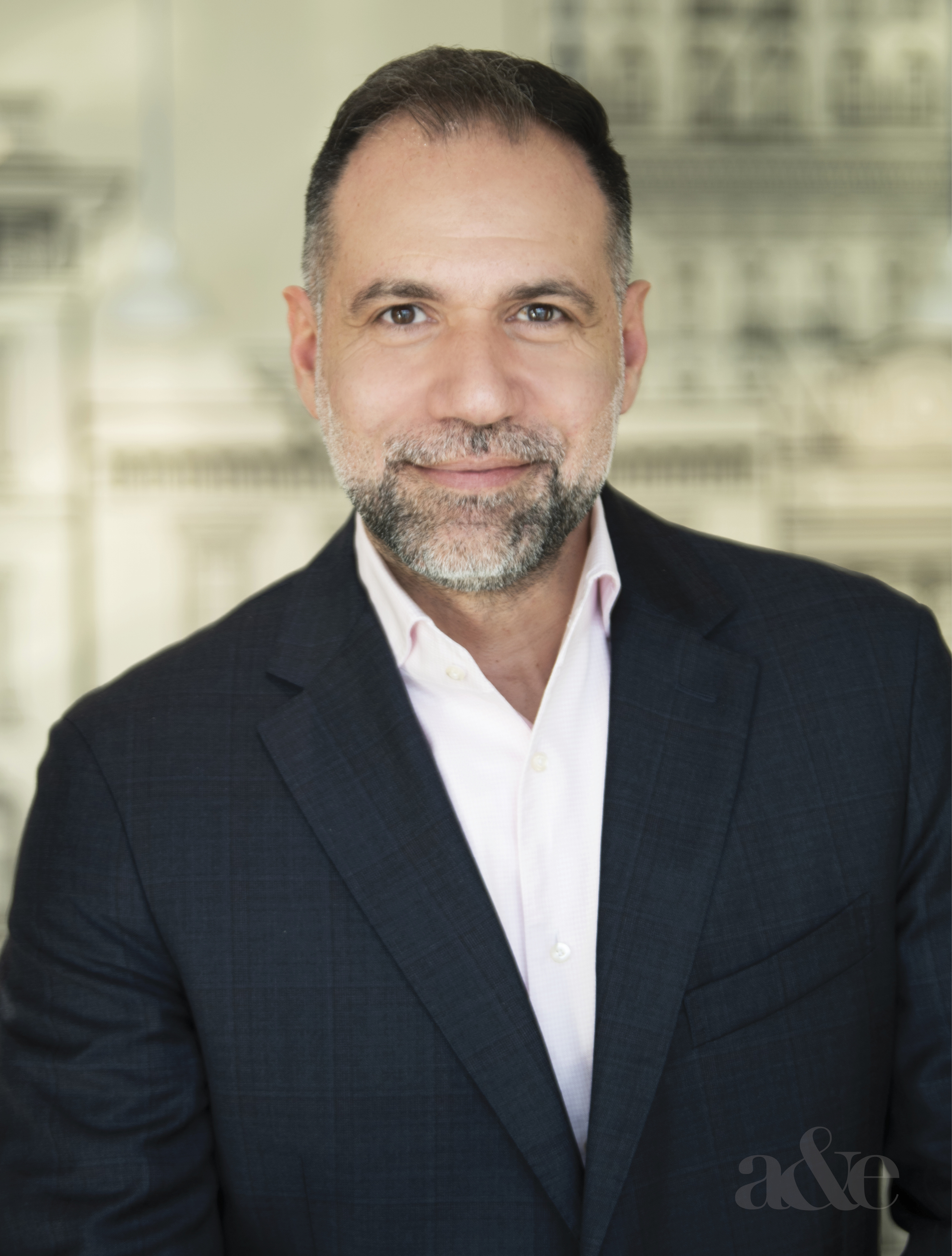
Under the leadership of the Ras Al Khaimah Tourism Development Authority (RAKTDA), the emirate is undergoing a remarkable transformation: from expanding luxury hospitality and eco-conscious resorts to breaking new ground with the region’s first integrated resort, Wynn Al Marjan Island.
With its unique positioning as the “Nature Emirate,” Ras Al Khaimah offers a compelling alternative to the UAE’s urban mega-cities, focusing instead on heritage, wellness, and immersive outdoor experiences. It has set ambitious goals to welcome 3.5 million annual visitors by 2030 and grow tourism’s contribution to GDP from 5% to a third, backed by an extensive development pipeline of over 7,500 hotel keys and infrastructure investments that are reshaping accessibility and guest experience.
In this interview, Iyad Rasbey, Vice President of Destination Tourism Development, discusses what’s driving Ras Al Khaimah’s momentum, the balance between growth and conservation, and how the emirate is redefining luxury for the next generation of travellers.
Ras Al Khaimah has emerged as one of the fastest-growing destinations in the region. What do you attribute this momentum to, and what are your long-term ambitions for the emirate’s tourism sector?
Over the past few years, Ras Al Khaimah has established itself as one of the region’s most dynamic tourism success stories. It’s the fastest-growing destination in the Middle East, and that’s no coincidence.
A big part of that is down to the Emirate’s natural diversity. With mountains, beaches and deserts all in one place, it offers a balance of adventure, heritage and relaxation that continues to resonate with travellers. Its identity as the Nature Emirate gives it a unique edge, allowing visitors to explore the outdoors in a way that feels both immersive and accessible.
At the same time, we’re scaling up to meet demand. More than 7,500 hotel keys are in the pipeline, with international brands such as Nobu, JW Marriott and Nikki Beach joining the mix. Wynn Al Marjan Island, a $5.1 billion investment, is set to be the region’s first integrated resort and marks the largest foreign direct investment in our tourism sector to date.
The goal is to welcome 3.5 million visitors a year by 2030 and grow tourism’s contribution to GDP from 5% to one third. But beyond the numbers, it’s about building a destination that is liveable, sustainable and genuinely rewarding to visit.
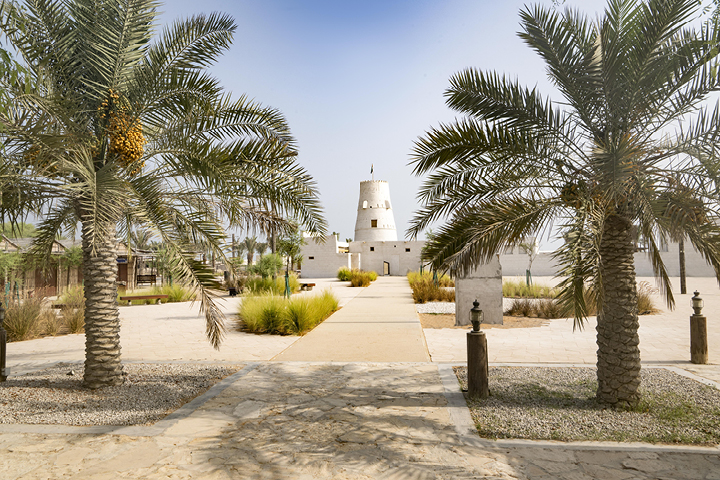
How is Ras Al Khaimah positioning itself differently from its neighbouring emirates in the UAE’s increasingly competitive luxury tourism landscape?
Ras Al Khaimah offers a very different take on luxury. While other destinations in the region focus on ultra-modern cityscapes and large-scale entertainment, our strength lies in the natural setting and the ability to offer authentic, experiential luxury. With 64 kilometres of pristine coastline, the Hajar mountains, terracotta desert and mangroves, the Emirate gives visitors a real sense of space and connection to nature.
Luxury here is shaped by the landscape and the experiences that come with it. Travellers can enjoy mountain-top dining at 1484 by Puro, the UAE’s highest restaurant, or stay at one of many five-star properties that provide direct access to beaches, nature reserves and hiking trails. The upcoming Wynn Al Marjan Island integrated resort will introduce a new level of luxury and entertainment to the region, while brands like Anantara, Ritz-Carlton and InterContinental offer stays centred around wellness, privacy and calm.
We’re also investing in experiences that reflect the evolution of luxury travel. Saij, our new mountain eco-lodge, will focus on guided treks, creative pursuits and farm-to-table dining. Properties like the Ritz-Carlton Al Wadi Desert give guests the chance to disconnect and immerse themselves in nature, with a level of refinement that doesn’t compromise on character.
With nearly 80% of our hotel pipeline dedicated to five-star and luxury properties, Ras Al Khaimah is catering to a discerning audience but doing so on its own terms. This distinct approach allows Ras Al Khaimah to offer luxury that is grounded, immersive and in harmony with the natural world, making it a standout choice in an increasingly competitive landscape.
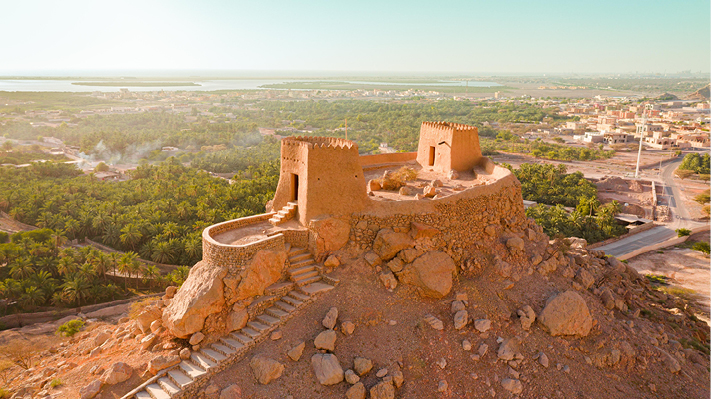
You’ve announced ambitious plans for new resorts, developments, and sustainability initiatives. What can we expect to see opening in the next 12 to 24 months?
The next couple of years will be defined by a series of landmark openings that reflect both our growth ambitions and our commitment to sustainable development. One of the most anticipated is Saij, A Mantis Collection Mountain Lodge, which will open by the end of this year. Set high on Jebel Jais, it will be the Emirate’s first mountain lodge, featuring 70 eco-conscious lodges, including seven with private plunge pools. Designed around wellness, guided treks and creative activities, Saij celebrates the natural surroundings and supports our wider sustainability goals. We’re also working with over 100 local farms in the area to revive organic farming, support local produce and champion a farm-to-table approach to dining.
In the luxury space, several global names will be opening their doors. These include Four Seasons, Nobu, W, Fairmont and Nikki Beach. Together with our existing 8,200 hotel keys and a pipeline of more than 7,500, these new openings will significantly strengthen Ras Al Khaimah’s premium offering.
Beyond hospitality, we are enhancing access and infrastructure. Ras Al Khaimah International Airport saw a 29% year-on-year increase in passenger traffic in 2024, with new direct routes from 11 cities including Moscow, Bucharest, Tashkent, Jeddah, Prague, Warsaw and Katowice, Almaty, and Hyderabad, India. We’ve also signed an agreement with Celestyal Cruises, expanding our cruise tourism offer.
Together, these developments are helping us create a destination that feels world-class yet rooted in nature, with quality, sustainability and guest experience at the heart of every decision.
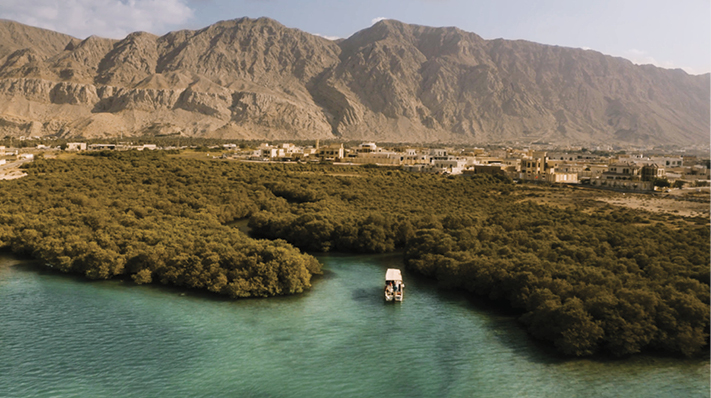
One of the emirate’s greatest assets is its breathtaking natural landscape—from the mountains to the mangroves. How do you balance development with conservation?
Striking that balance has been at the centre of our strategy from the very beginning. Ras Al Khaimah is defined by its landscape, so preserving that natural beauty while continuing to grow is not just important but essential to our long-term success.
We’ve built strong foundations through our partnership with EarthCheck, which has helped us embed sustainability into every stage of destination planning. The result has been tangible. We’ve recorded a 29% reduction in greenhouse gas emissions and a 61% drop in waste output, both well above the regional average. We were also the first destination in the Middle East to receive EarthCheck Silver Certification, something we’re incredibly proud of.
At a development level, programmes like Responsible RAK and the Barjeel Green Building Regulations are helping to ensure that hotels and tourism businesses meet environmental benchmarks across energy, waste and water. We’ve also completed the region’s largest-ever accessibility audit, covering hotels, attractions, the airport and transport, which allows us to design a destination that is inclusive as well as sustainable.
On the conservation front, we’re working with the Department of Antiquities and Museums and the Al Qasimi Foundation to preserve 20 of our most important cultural sites, including Al Jazeera Al Hamra, which is being restored using traditional materials and methods to protect its historical integrity. As we continue to grow, that sense of responsibility to both people and place remains a key part of how we move forward.
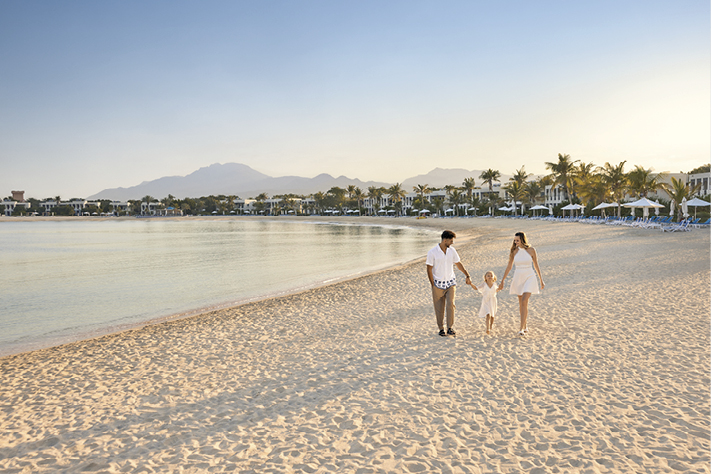
Heritage and authenticity are becoming key to luxury travellers. How does Ras Al Khaimah’s history and cultural legacy shape your tourism narrative?
Our story spans over 7,000 years, and that depth of history gives the Emirate a strong sense of identity. It’s one of the few places in the region with continuous human settlement, and we’ve worked hard to make sure that heritage remains part of how people experience the destination today.
We’ve documented more than 80 archaeological sites, and we’re actively conserving 20 of the most significant. Four of these are already recognised on UNESCO’s Tentative World Heritage List. Sites like Al Jazeera Al Hamra are being carefully restored using original building materials and techniques, not just to preserve their character but to keep that connection between past and present alive.
What matters is not just protecting these places but making them accessible in a way that feels engaging. Visitors can walk through ancient forts, explore old coastal villages or visit Suwaidi Pearls, the UAE’s only traditional pearl farm, where they learn first-hand about one of the region’s oldest trades. Culture, craft and community are woven into the experience here. That’s what gives Ras Al Khaimah its authenticity and it’s something travellers increasingly value.
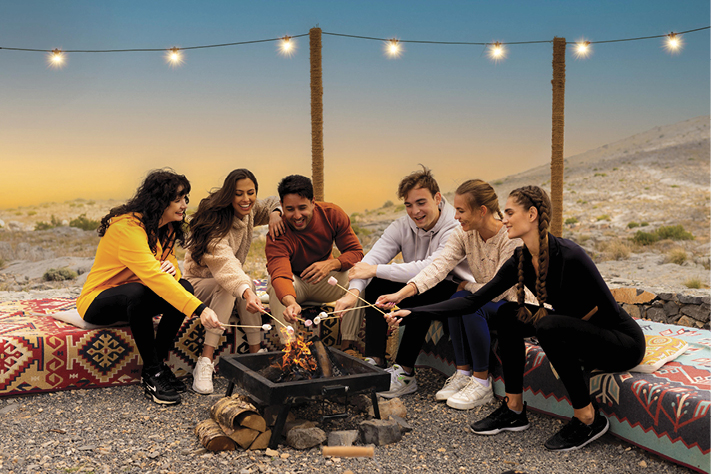
What are some of your personal favourite hidden gems in Ras Al Khaimah that even seasoned UAE residents might not have discovered yet?
There are quite a few places that surprise people, even those who think they know the Emirate well. One of my favourites is Suwaidi Pearls in the village of Al Rams. It is the only pearl farm of its kind in the UAE and offers a fascinating glimpse into the traditions of pearl diving, complete with a boat ride through the mangroves and a hands-on look at how pearls are harvested.
Camp 1770 is another spot that really stands out. It is perched on Jebel Jais and is the highest campsite in the UAE. It is fully solar-powered and off-grid, designed for minimal impact. Guests can take part in guided hikes, enjoy stargazing sessions or simply disconnect and enjoy the stillness of the mountains.
Then there is Eayshat Awal, a small family-run Emirati restaurant tucked away in a quiet part of the city. It serves traditional recipes passed down through generations, and the warmth and hospitality you get there make it feel more like dining in someone’s home than a restaurant. It is places like these that give Ras Al Khaimah its soul and they are often what people remember most.
As someone tasked with shaping the global perception of Ras Al Khaimah, what are some of the unique challenges you face?
Shaping the global perception of Ras Al Khaimah means finding the right balance between visibility and authenticity. The challenge is not just about awareness but about ensuring that what people hear and see genuinely reflects who we are as a destination.
Ras Al Khaimah is growing quickly, and with that comes the responsibility to communicate its evolution in a way that remains grounded in its natural and cultural foundations. We are not simply promoting new hotels or experiences. We are telling a broader story of a place that is deeply rooted in heritage and moving forward with purpose. That requires thoughtful messaging and a long-term approach, especially in a region where rapid development can sometimes overshadow the character of a destination.
Ultimately, it is about shaping perception in a way that stays true to the spirit of the place while building a destination that is ready for the future.
You’ve set bold goals to attract over 3 million visitors annually by 2030. What role will global events, infrastructure, and international partnerships play in achieving that?
Events are central to how we attract visitors and shape the destination’s global profile. But it is not about volume alone. We focus on events that leave a lasting impact, whether that is through investment, cultural exchange or economic contribution.
The Arab Aviation Summit has strengthened our aviation strategy by supporting new routes through Ras Al Khaimah International Airport and opening up access from key source markets. The Global Citizen Forum brings investors and family offices into the Emirate each year, reinforcing its position as a destination with long-term value. The Exotic Wedding Planning Conference has helped establish Ras Al Khaimah as a premium destination for weddings, resulting in bookings from international planners.
Events like AHIC introduced developers and hospitality leaders to the market and contributed to the hotel partnerships we see today. The Ras Al Khaimah Art Festival brings international and local artists together at Al Jazeera Al Hamra, a heritage site that reflects our commitment to culture and creativity. The 2023 Minifootball World Cup brought in 32 national teams and delivered measurable economic impact, generating more than AED 13 million in visitor spending, 90% hotel occupancy and a 20% increase in average length of stay.
These moments are supported by a strong infrastructure network and growing international access. Ras Al Khaimah International Airport welcomed 661,765 passengers in 2024, a 29% increase from the year before and nearly double the 2022 total. New direct flights connect the Emirate to Poland, Uzbekistan, Romania, Russia, Saudi Arabia and India, strengthening our ability to welcome both leisure and MICE travellers.
We are also expanding our capacity to host large-scale gatherings. As part of our destination masterplan, which focuses on liveability, sustainability and long-term growth, we are looking at developing a new convention centre in addition to the 7,500 square metre events facility at Wynn Marjan Island.
On the partnership side, our collaboration with EarthCheck continues to guide our sustainability strategy. MoUs with Huawei, Open World and Fujairah Adventures are helping us reach new markets, introduce innovation into the visitor experience and deliver new types of tourism offerings, including the UAE’s first cross-emirate hiking trail. Together, these elements are helping us build a tourism ecosystem that is connected, competitive and designed to deliver long-term value.
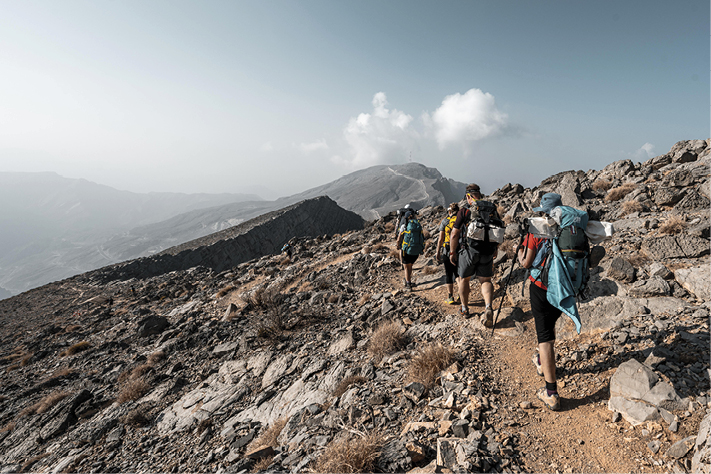
How are you working to attract not just international tourists but also residents from across the UAE looking for new, meaningful getaways?
We have been focused on giving both international visitors and UAE residents new reasons to keep choosing Ras Al Khaimah, not just for a quick getaway but for experiences that feel personal, enriching, and easy to access.
We continue to invest in standout experiences that add depth and variety. The upcoming launch of Jais Wings, the region’s first dedicated paragliding site, will add a new dimension to our mountain offering, giving residents a fresh way to experience the UAE’s highest peak.
All of this is about giving people more reasons to return. Whether it is a mountain adventure, a beach break, or a cultural weekend, Ras Al Khaimah is designed to feel close, easy, and worth it every time.
What is your ultimate vision for Ras Al Khaimah as a global destination—and what would you like its name to represent in the mind of a luxury traveller?
Our vision is for Ras Al Khaimah to be recognised as the Destination of the Future, where luxury is defined by meaning, and where nature, culture, and wellbeing come together in a way that feels both elevated and authentic.
For the luxury traveller, we want Ras Al Khaimah to represent space, serenity, and substance. A place where five-star experiences are shaped not just by design or service, but by the richness of the landscape, the stories behind every detail, and the ability to truly disconnect and recharge. Whether it is paragliding over the mountains, dining under the stars in the desert, or exploring centuries-old traditions along the coast, we want every moment to feel thoughtful and unforgettable.



